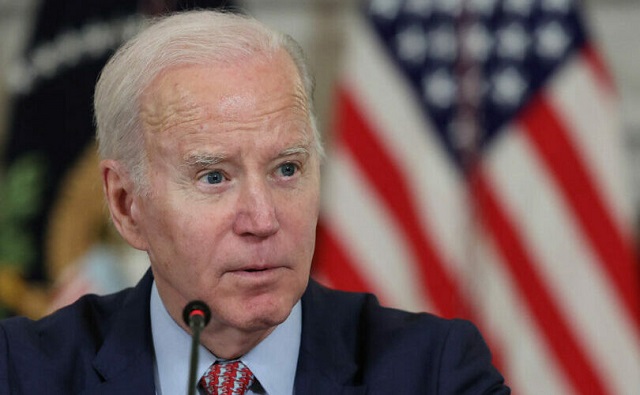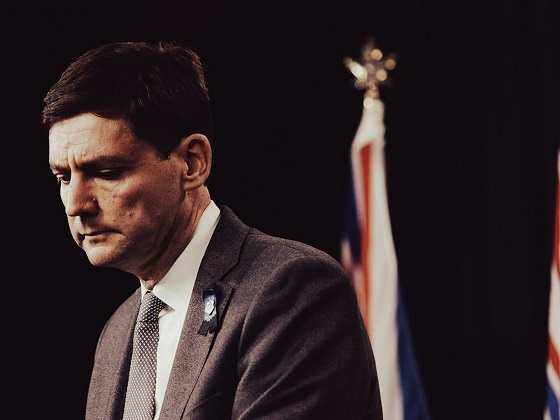International
Liberal reporter reveals Democrats secretly wonder who’s running America after seeing Biden

From LifeSiteNews
New York Magazine’s Olivia Nuzzi reveals that since January, Democrat insiders have been reaching out to her to convey the fears about who’s actually in charge of the federal government they’ve developed after seeing Joe Biden’s cognitive decline up close.
The fallout from incumbent President and presumptive Democrat White House nominee Joe Biden’s disastrous first 2024 debate with Republican predecessor and challenger Donald Trump continues, with liberal New York Magazine publishing perhaps the most scathing account yet of Democrats privately vindicating concerns about the president’s mental health that for years had been dismissed as partisan smears.
At age 81, Biden is the oldest president in U.S. history, and throughout his tenure he has been hounded by concerns that he has been suffering cognitive decline, based on increasingly frequent public instances of odd statements, incoherence, tripping, and apparent fatigue and confusion, with polls finding majorities considered him too old to effectively serve a second term.
Democrats and their allies in the mainstream press have largely dismissed such concerns as unfounded; as recently as June 21, left-wing “fact-checking” outlet PolitiFact attributed the narrative in large part to “videos of President Joe Biden that have been selectively edited or taken out of context.”
Just six days later, however, the narrative on the Left changed almost overnight with Biden’s performance against Trump in a debate hosted by CNN. LifeSiteNews’ Ashley Sadler described the president as “appear(ing) visibly unwell from the beginning of the debate, struggling with numerous answers (including, early in the debate, claiming to have ‘finally beat Medicare’), speaking with a hoarse voice, and frequently seeming vacant.”
Ever since, Democrat commentators, strategists, and activists have spoken openly about their fear and panic over winning the election if Biden remains their nominee, with the White House so far resisting calls for the president to bow out.
On June 29, Axios published a report detailing admissions from “current and former Biden officials” that the president is only “dependably engaged” between the hours of 10 a.m. to 4 p.m., outside of which “or while traveling abroad, Biden is more likely to have verbal miscues and become fatigued.”
On July 4, New York Magazine Washington correspondent Olivia Nuzzi published an even more damning story, about a “Conspiracy of Silence to Protect Joe Biden,” based on off-the-record conversations with Democrat insiders who had been reaching out to her since January to relay their concerns as to whether Biden could “even make it to Election Day” that they developed after interacting with or seeing him up close.
“Those who encountered the president in social settings sometimes left their interactions disturbed,” Nuzzi wrote. “Longtime friends of the Biden family, who spoke to me on the condition of anonymity, were shocked to find that the president did not remember their names. At a White House event last year, a guest recalled, with horror, realizing that the president would not be able to stay for the reception because it was clear he would not be able to make it through the reception. The guest wasn’t sure they could vote for Biden, since the guest was now open to an idea that they had previously dismissed as right-wing propaganda: The president may not really be the acting president after all.”
“Who was actually in charge? Nobody knew,” she continued. “But surely someone was in charge? And surely there must be a plan, since surely this situation could not endure? I heard these questions posed at cocktail parties on the coasts but also at MAGA rallies in Middle America. There emerged a comical overlap between the beliefs of the nation’s most elite liberal Biden supporters and the beliefs of the most rabid and conspiratorial supporters of former President Trump. Resistance or QAnon, they shared a grand theory of America in 2024: There has to be a secret group of high-level government leaders who control Biden and who will soon set into motion their plan to replace Biden as the Democratic presidential nominee. Nothing else made sense. They were in full agreement.”
Nuzzi recounted personally observing some of the same while following then-candidate Biden in 2020, who had “good days” of recognizing her and being as sharp and engaging as ever, but also “bad days” when “he was less animated. He stared off. He did not make eye contact. He would trip over his words, even if they were programmed in a teleprompter. On such occasions, he was hurried out of the venue quickly and ushered into a waiting SUV.”
When seeing Biden at this year’s White House Correspondents’ Dinner, Nuzzi says she was taken aback by him looking “not quite plausible.”
“I tried to make eye contact, but it was like his eyes, though open, were not on. His face had a waxy quality,” she wrote. “He smiled. It was a sweet smile. It made me sad in a way I can’t fully convey. I always thought — and I wrote — that he was a decent man. If ambition was his only sin, and it seemed to be, he had committed no sin at all by the standards of most politicians I had covered. He took my hand in his, and I was startled by how it felt. Not cold but cool. The basement was so warm that people were sweating and complaining that they were sweating. This was a silly black-tie affair. I said ‘hello.’ His sweet smile stayed frozen. He spoke very slowly and in a very soft voice. ‘And what’s your name?’ he asked.”
After the photo op, she added, other reporters “made guesses about how dead (Biden) appeared to be, percentage wise. ‘Forty percent?’ one of them asked.”
National polling aggregations by RealClearPolitics and RaceToTheWH indicate a widening popular vote lead for Trump since the debate, with the former president’s leads in swing states translating to a seemingly durable Electoral College advantage over Biden.
Energy
Trump Takes More Action To Get Government Out Of LNG’s Way


From the Daily Caller News Foundation
By David Blackmon
The Trump administration moved this week to eliminate another Biden-era artificial roadblock to energy infrastructure development which is both unneeded and counterproductive to U.S. energy security.
In April 2023, Biden’s Department of Energy, under the hyper-politicized leadership of Secretary Jennifer Granholm, implemented a new policy requiring LNG projects to begin exports within seven years of receiving federal approval. Granholm somewhat hilariously claimed the policy was aimed at ensuring timely development and aligning with climate goals by preventing indefinite delays in energy projects that could impact emissions targets.
This claim was rendered incredibly specious just 8 months later, when Granholm aligned with then-President Joe Biden’s “pause” in permitting for new LNG projects due to absurd fears such exports might actually create higher emissions than coal-fired power plants. The draft study that served as the basis for the pause was thoroughly debunked within a few months, yet Granholm and the White House steadfastly maintained their ruse for a full year until Donald Trump took office on Jan. 20 and reversed Biden’s order.
Certainly, any company involved in the development of a major LNG export project wants to proceed to first cargoes as expeditiously as possible. After all, the sooner a project starts generating revenues, the more rapid the payout becomes, and the higher the returns on investments. That’s the whole goal of entering this high-growth industry. Just as obviously, unforeseen delays in the development process can lead to big cost overruns that are the bane of any major infrastructure project.
On the other hand, these are highly complex, capital-intensive projects that are subject to all sorts of delay factors. As developers experienced in recent years, disruptions in supply chains caused by factors related to the COVID-19 pandemic resulted in major delays and cost overruns in projects in every facet of the economy.
Developers in the LNG industry have argued that this arbitrary timeline was too restrictive, citing these and other factors that can extend beyond seven years. Trump, responding to these concerns and his campaign promises to bolster American energy dominance, moved swiftly to eliminate this requirement. On Tuesday, Reuters reported that the U.S. was set to rescind this policy, freeing LNG projects from the rigid timeline and potentially accelerating their completion.
This policy reversal could signal a broader approach to infrastructure under Trump. The Infrastructure Investment and Jobs Act, enacted in 2021, allocated $1.2 trillion to rebuild roads, bridges, broadband and other critical systems, with funds intended to be awarded over five years, though some projects naturally extend beyond that due to construction timelines. The seven-year LNG deadline was a specific energy-related constraint, but Trump’s administration has shown a willingness to pause or redirect Biden-era infrastructure funding more generally. For instance, Trump’s Jan.20 executive order, “Unleashing American Energy,” directed agencies to halt disbursements under the IIJA and IRA pending a 90-day review, raising questions about whether similar time-bound restrictions across infrastructure sectors might also be loosened or eliminated.
Critics argue that scrapping deadlines risks stalling projects indefinitely, undermining the urgency Biden sought to instill in modernizing U.S. infrastructure. Supporters argue that developers already have every profit-motivated incentive to proceed as rapidly as possible and see the elimination of this restriction as a pragmatic adjustment, allowing flexibility for states and private entities to navigate permitting, labor shortages and supply chain issues—challenges that have persisted into 2025.
For example, the $294 billion in unawarded IIJA funds, including $87.2 billion in competitive grants, now fall under Trump’s purview, and his more energy-focused administration could prioritize projects aligned with his energy and economic goals over Biden’s climate and DEI-focused initiatives.
Ultimately, Trump’s decision to end the seven-year LNG deadline exemplifies his intent to reshape infrastructure policy by prioritizing speed, flexibility and industry needs. Whether this extends formally to all U.S. infrastructure projects remains unclear, but seems likely given the Trump White House’s stated objectives and priorities.
This move also clearly aligns with the overall Trump philosophy of getting the government out of the way, allowing the markets to work and freeing the business community to restore American Energy Dominance in the most expeditious way possible.
David Blackmon is an energy writer and consultant based in Texas. He spent 40 years in the oil and gas business, where he specialized in public policy and communications.
Automotive
Auto giant shuts down foreign plants as Trump moves to protect U.S. industry

 MxM News
MxM News
Quick Hit:
Stellantis is pausing vehicle production at two North American facilities—one in Canada and another in Mexico—following President Donald Trump’s announcement of 25% tariffs on foreign-made cars. The move marks one of the first corporate responses to the administration’s push to bring back American manufacturing.
Key Details:
-
In an email to workers Thursday, Stellantis North America chief Antonio Filosa directly tied the production pause to the new tariffs, writing that the company is “continuing to assess the medium- and long-term effects” but is “temporarily pausing production” at select assembly plants outside the U.S.
-
Production at the Windsor Assembly Plant in Ontario will be paused for two weeks, while the Toluca Assembly Plant in Mexico will be offline for the entire month of April.
-
These plants produce the Chrysler Pacifica minivan, the new Dodge Charger Daytona EV, the Jeep Compass SUV, and the Jeep Wagoneer S EV.
Diving Deeper:
On Wednesday afternoon in the White House Rose Garden, President Trump announced sweeping new tariffs aimed at revitalizing America’s auto manufacturing industry. The 25% tariffs on all imported cars are part of a broader “reciprocal tariffs” strategy, which Trump described as ending decades of globalist trade policies that hollowed out U.S. industry.
Just a day later, Stellantis became the first major automaker to act on the new policy, halting production at two of its international plants. According to an internal email obtained by CNBC, Stellantis North American COO Antonio Filosa said the company is “taking immediate actions” to respond to the tariff policy while continuing to evaluate the broader impact.
“These actions will impact some employees at several of our U.S. powertrain and stamping facilities that support those operations,” Filosa wrote.
The Windsor, Ontario plant, which builds the Chrysler Pacifica and the newly introduced Dodge Charger Daytona EV, will shut down for two weeks. The Toluca facility in Mexico, responsible for the Jeep Compass and Jeep Wagoneer S EV, will suspend operations for the entire month of April.
The move comes as Stellantis continues to face scrutiny for its reliance on low-wage labor in foreign markets. As reported by Breitbart News, the company has spent years shifting production and engineering jobs to countries like Brazil, India, Morocco, and Mexico—often at the expense of American workers. Last year alone, Stellantis cut around 400 U.S.-based engineering positions while ramping up operations overseas.
Meanwhile, General Motors appears to be responding differently. According to Reuters, GM told employees in a webcast Thursday that it will increase production of light-duty trucks at its Fort Wayne, Indiana plant—where it builds the Chevrolet Silverado and GMC Sierra. These models are also assembled in Mexico and Canada, but GM’s decision suggests a shift in production to the U.S. could be underway in light of the tariffs.
As Trump’s trade reset takes effect, more automakers are expected to recalibrate their production strategies—potentially signaling a long-awaited shift away from offshoring and toward rebuilding American industry.
-

 Business2 days ago
Business2 days agoCalifornia planning to double film tax credits amid industry decline
-

 2025 Federal Election6 hours ago
2025 Federal Election6 hours agoCanada Continues to Miss LNG Opportunities: Why the World Needs Our LNG – and We’re Not Ready
-

 Catherine Herridge2 days ago
Catherine Herridge2 days agoFBI imposed Hunter Biden laptop ‘gag order’ after employee accidentally confirmed authenticity: report
-

 COVID-191 day ago
COVID-191 day agoTrump’s new NIH head fires top Fauci allies and COVID shot promoters, including Fauci’s wife
-

 Business1 day ago
Business1 day agoB.C. Credit Downgrade Signals Deepening Fiscal Trouble
-

 2025 Federal Election1 day ago
2025 Federal Election1 day agoWill Four More Years Of Liberals Prove The West’s Tipping Point?
-

 Freedom Convoy1 day ago
Freedom Convoy1 day agoFreedom Convoy leaders Tamara Lich, Chris Barber found guilty of mischief
-

 Business1 day ago
Business1 day agoTrump’s ‘Liberation Day’ – Good News for Canadian Energy and Great News for WCSB Natural Gas






